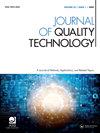退化建模和预测的数据级迁移学习
IF 2.2
2区 工程技术
Q2 ENGINEERING, INDUSTRIAL
引用次数: 2
摘要
摘要数据驱动预测的典型方法是利用历史数据训练退化模型,然后应用该模型对在役单元进行故障预测。大多数现有的工作假设历史数据和在役数据来自同一过程。然而,在实践中,不同但相关的过程可以共享类似的退化模式。因此,这些过程的历史数据有望为彼此提供有用的预后信息。在本文中,我们提出了一个数据级迁移学习框架,从不同的过程中提取有用的和共享的信息,以有利于在役单位的预测。在这个框架中,每个过程中的退化数据用混合效应模型来建模。为了方便不同混合效应模型之间的信息共享,提出了一种层次贝叶斯结构来建模和连接不同混合模型中混合效应的分布。由于不同过程的退化路径很少相同,因此每个过程的混合效应/回归量的维数可能不同。为了解决这一问题,我们提出了一种定制的线性变换,以边缘化或扩大不同降解过程中混合效应的分布,以获得一致的维度。最后将传递的信息与在役单元的退化数据相结合,进行预测。所提出的方法在广泛的数值研究和两个案例研究中得到了验证并与各种基准进行了比较。结果表明,该方法能够在不同的过程中成功传递有用信息,有利于预测。本文章由计算机程序翻译,如有差异,请以英文原文为准。
Data-level transfer learning for degradation modeling and prognosis
Abstract The typical way to conduct data-driven prognosis is to train a degradation model with historical data, then apply the model to predict failure for in-service units. Most existing works assume the historical data and in-service data are from the same process. In practice, however, different but related processes can share similar degradation patterns. Thus, the historical data from these processes are expected to provide useful prognosis information for each other. In this article, we propose a data-level transfer learning framework to extract useful and shared information from different processes to benefit the prognosis of in-service units. In this framework, the degradation data in each process is modeled by a mixed effects model. To facilitate the information sharing among different mixed effects models, a hierarchical Bayesian structure is proposed to model and connect the distributions of mixed effects in different mixed models. Because the degradation paths in different processes are rarely the same, the dimension of the mixed effects/regressor in each process can be different. To handle this issue, we propose a tailored linear transformation to marginalize or expand the distributions of mixed effects in different degradation processes to achieve consistent dimensions. The transferred information is finally incorporated with the degradation data from in-service units to conduct prognosis. The proposed method is validated and compared with various benchmarks in extensive numerical studies and two case studies. The results show the proposed method can successfully transfer useful information in different processes to benefit the prognosis.
求助全文
通过发布文献求助,成功后即可免费获取论文全文。
去求助
来源期刊

Journal of Quality Technology
管理科学-工程:工业
CiteScore
5.20
自引率
4.00%
发文量
23
审稿时长
>12 weeks
期刊介绍:
The objective of Journal of Quality Technology is to contribute to the technical advancement of the field of quality technology by publishing papers that emphasize the practical applicability of new techniques, instructive examples of the operation of existing techniques and results of historical researches. Expository, review, and tutorial papers are also acceptable if they are written in a style suitable for practicing engineers.
Sample our Mathematics & Statistics journals, sign in here to start your FREE access for 14 days
 求助内容:
求助内容: 应助结果提醒方式:
应助结果提醒方式:


